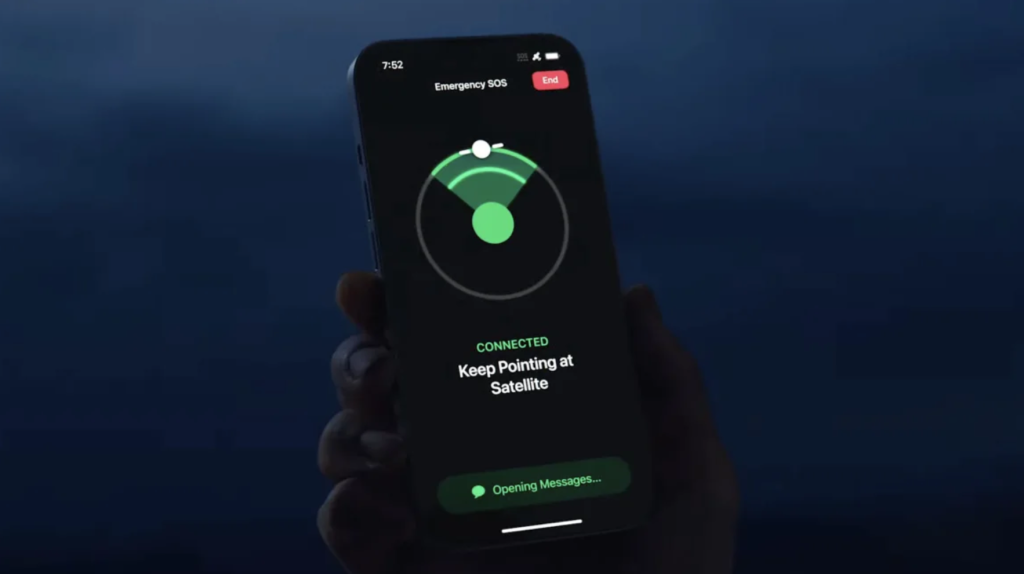Apple introduced a new satellite connectivity feature named Emergency SOS via Satellite during its iPhone 14 launch event. This feature aims to assist users of their next-generation phones in communicating when traditional cellular service is unavailable—a development Apple stated took years to achieve.
The company integrated specific technology into iPhone 14 devices, enabling them to connect to satellites independently of terrestrial towers. Scheduled for release in November in the United States and Canada, the service was announced alongside the iPhone 14’s starting price of $799 during Apple’s annual event on Wednesday.
“Unlike stationary cell towers, communication satellites orbit hundreds of miles above Earth, traveling at speeds exceeding 15,000 miles per hour,” explained Ashley Williams, an Apple satellite specialist at the event. “To connect to these satellites, users must be outdoors with an unobstructed view of the sky. Bandwidth is limited, making even text messaging a technical challenge.”
“We recognized that the traditional approach, involving expensive devices with bulky external antennas, would not be suitable for the iPhone,” Williams continued. “So, we developed an innovative solution.”
The iPhone 14 features a built-in antenna necessary for satellite communication, designed to be sleek and modern unlike previous satellite phones.
The device includes software that guides users to align their phones correctly to establish satellite connections when other options are unavailable. Once connected, the phones can send and receive information for emergency assistance. Apple has also implemented a text compression mechanism to expedite message delivery, taking about 15 seconds under ideal conditions (though this may be slightly longer if obstacles like foliage obstruct the signal).
According to Apple’s iPhone marketing vice president Kaiann Drance, the satellite service included with the iPhone 14 will support text-based communication and enable users to reach emergency centers that typically only accept voice calls through designated relay centers.
Additionally, this tool can be used in non-emergency scenarios, such as keeping family informed during extended hikes.
For the first two years following an iPhone 14 purchase, the satellite service will be provided at no cost. However, Drance did not disclose the pricing structure beyond this initial period.
Ben Wood, chief analyst at CCS Insight, emphasized that Apple’s addition of satellite capability is significant and likely required extensive investment, including partnerships with satellite provider Globalstar and the development of necessary infrastructure for emergency messaging.
Globalstar has confirmed its involvement in the project through a financial filing, though Apple has not yet responded to requests for further details.
This announcement follows T-Mobile’s recent plans to address coverage gaps using SpaceX Starlink satellites for backup service, aiming to provide comprehensive high-speed internet coverage in currently underserved areas. T-Mobile anticipates rolling out this service by the end of next year, compatible with existing customer devices.

COMMENTS